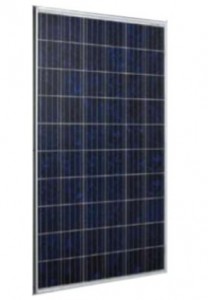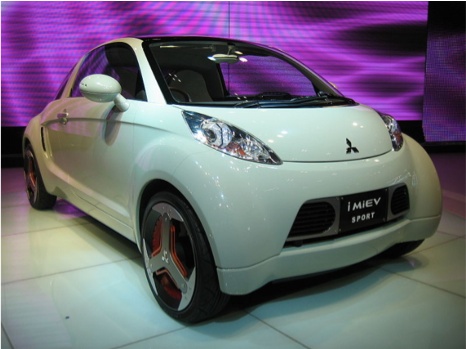The KONAUS™ House is a new concept in housing. It addresses the energy and environmental issues as well as the value problems of currently built homes in the US, while using modern, but existing and available materials and technology. The House will be well-constructed, energy independent, technology savvy, and will have a high retained value for both the homeowner and lender. Even the external plantings will be specified for local, low-maintenance vegetation that requires little watering and few chemicals.Today’s US housing market has several well-known problems. Ultimately, the low retained value of a home is its basic issue. Many new homes are sold based on their “Curb Appeal” and speculative value. When demand falls, the value and actual resale price of these homes falls – frequently dramatically. The KONAUS™ House is built with a concept of high retained value, and a maintained resale value. This is accomplished with quality energy-efficient construction, home energy generation, smarthouse connectivity, and avoiding unnecessary superfluous design elements, that become low-value. A key element of the KONAUS House is that it is the primary source of fuel for the Electric Vehicle.Many builders construct their houses to the absolute minimum building code standards in their area. Advanced security, information, control, entertainment and communications features are usually expensive options and minimally available. Advanced environmentally effective materials are avoided because they tend to be slightly more expensive. The resultant homes are usually visually very attractive, but are quickly obsolete, and have minimal retained value.
Using the latest housing CAD (Computer Aided Design) technology, each KONAUS™ House is specifically designed for the geographic region and actual location where it is built. In Hawaii, the roof slope will be 19 degrees, while in California, it will be 30 degrees. These roof slopes are based on the House’s latitude and maximize the efficiency of the PV panels. Even in Hawaii the KONAUS House design would vary to accommodate the multiple climate zones and other building factors of the Aloha State.
The steel roof, unlike asphalt composition, enable an optional water catchment system without introducing a gritty aggregate and petroleum pollution which can occur with the use of asphalt composition shingles.
An open, airy lanai (Hawaiian porch) area is accessible to both the garage and kitchen in the back corner of the home. The area under the lanai can house a concealed optional cistern for a roof water catchment system.
The design of the KONAUS™ House satisfies the owners needs and requirements as well as being easy to build. This design can also be modularized for off-site construction, minimizing cost, and weather exposure during “site build” time.
Options enable energy efficiency in the KONAUS™ House . KONAUS™ LLC plans to research and qualify a number of
renewable, environmentally sound, energy efficient building options, and provide them to both the homebuilder and homeowner.
The overall size of the recommended Mitsubishi PV solar system will be computed well before construction. The calculator for doing this is already available on the Mitsubishi and other PV provider websites. The resultant energy budget will need to be updated to include the additional energy demand of the Electric Vehicle (EV) and the energy budget of the owner-defined appliances and House systems. Prior to construction, the owner will be asked to make several decisions that will effect the size of the PV system needed, including the projected monthly driving range of the Electric Vehicle.
We expect that the overwhelming majority of KONAUS™ House units will be “on-grid” with the local electric company, in net-metering operation. In this case, the utility measures the power supplied to the grid by the KONAUS™ House PV system during sunny days, and subtracts the electricity supplied to the KONAUS™ House at night and during cloudy weather. The overall power usage from the utility is reconciled on a monthly basis by the utility, usually with no carry-forward credit allowed. The size of the KONAUS™ House PV system – as well as the energy efficient home demand – will be calculated to provide the homeowner with a system that requires absolute minimal net power from the local electric utility.
In the off-grid version, the KONAUS™ House will utilize a battery array to store electrical battery for use when the PV system is not producing. In some deployments, an emergency backup generation system may be also provided.
The KONAUS House design has been submitted to the USPTO with the novel and unique construction and process claims shown in this presentation.
The Mitsubishi 225 Watt PV panel is recommended, and is optimal for the KONAUS™ House energy application. Its proven reliability, warranty, long life, industry-leading efficiency and ease of installation enable the key energy independence aspect of the KONAUS™ House.
A key element of the KONAUS House energy independence is energy efficiency. The KONAUS™ House has excellent energy usage characteristics, will offer energy efficient ENERGY STAR appliances, and seek LEED-Homes® v3 compliance. To enable the efficient use of the energy generated by the home’s PV system. KONAUS™ LLC will research and work with appliance manufacturers and other home product suppliers to provide a list of options that will both give the homeowners the appliance and home features that they want, and still remain within the power budget of the power generated on the roof.
The optional recommended Mitsubishi iMiEV is a key element of the KONAUS™ House. The MiEV is an industry-leading vehicle in the quest for an automobile that does not exhaust any emissions into the environment. Its exhaust footprint is absolute zero. However, its batteries must usually be charged with power supplied by a local utility. In the US, this power is frequently generated by burning coal (about 50% of all US power generation), which is bad for the environment. Utilizing the KONAUS™ House PV solar system for i MiEV battery charging effectively completely offsets the power generated by the utility. This not only saves the environment from emissions, it saves then homeowner the large expense of powering his or her car. (As these notes are being written, crude oil is selling for US$100 per barrel, and gasoline is selling for well over US$3.00 per gallon about in most US states.)
The KONAUS™ House provides the power for the i-MiEV Electric Vehicle. If a longer-range hybrid vehicle is required, the Mitsubishi PX MiEV, the Toyota Prius or GM Volt can be among the options.
The KONAUS™ House utilizes current smarthouse technology, including a “single pull” cable distributed from the home’s residential gateway and optional computer backbone. The house will have a unique secure website, accessible and controllable by the owner, remotely. The house will enable safety, security, communication, house control, information and entertainment defined by the homeowner. The “Smart” system will also control the houses climate based upon occupancy in various rooms.
The KONAUS™ House structured wiring contains CAT 5e or CAT 6, RG6 cables, and fiber optic to enable the electronic systems. The home will also utilize WiFi technology. The residential gateway, located in the entryway closet, along with a home PC, control all of the systems. By implementing structured wiring at the time construction, the homeowner can enable his or her smart home immediately, at minimal cost.
KONAUS™ House permits the builder to define some aspects and the homeowner to define the remainder. The builder will need to accommodate the lot size and aspect ratio, as well as other local regulations and cost constraints. The homeowner can make modifications (within the constraints of the KONAUS™ House specification) to implement specific needs and upgrades.
There are several solar PV financing plans currently available, but we believe this is the first plan that offers the homebuyer both “zero” up-front costs for the PV system, and eventual complete ownership. Most competing systems offer “free” installation, and then mandate that the homeowner sign an energy “lease”. At the end of the lease (10 or 20 years) the installer retains PV ownership. The homeowner may then purchase the PV system, renew the lease, or return (uninstall) the PV system.
The KONAUS™ House PV financing proposal provides the homeowner with tangible retained home value. The Mitsubishi PV system is installed at no homeowner cost entirely funded by a loan guaranteed by the House and PV system. The homeowner then “buys” electricity from himself at a fixed rate (which will not rise with the local electric utility rate.) These payments, along with all government and other “green” incentives will be dedicated to retiring the loan. When the loan is retired (unlike other plans) the homeowner totally owns the system, greatly enhancing the value of the KONAUS™ House for many years.
Thank you for taking the time to review our KONAUS™ House initiative. The concepts for this initiative were developed by Yoshito Yamaguchi, Paul Bleck and Jim Farrell.
Registration for KONAUS, LLC has been filed in the County of Hawaii, State of Hawaii, USA

